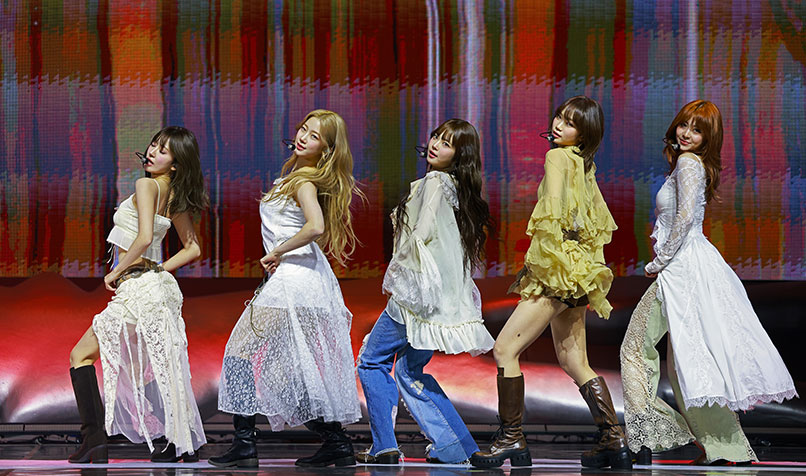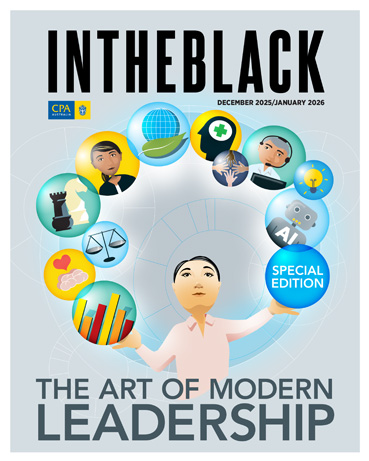Loading component...
At a glance
- South Korea’s cultural-economy success through K-pop, film and other booming “soft” sectors is a potential blueprint for other countries.
- Identifying unique strengths, such as indigenous culture, is crucial to developing a thriving cultural economy in Australia.
- The 2032 Brisbane Olympics is a significant chance to drive sport, cultural and tourism opportunities in Queensland
For decades, ubiquitous South Korean conglomerates, or chaebol, such as Samsung, Hyundai, SK and LG have been the dominant players in the nation’s phenomenal transformation into a global economic force.
Those trailblazers now have some competition. In line with the rise of South Korea’s cultural economy, K-pop bands such as BTS and BLACKPINK have an adoring fan base around the world.
Films such as Academy Award-winner Parasite and Netflix’s Squid Game have received global cinematic acclaim.
Likewise, brands such as Innisfree and Sulwhasoo have powered a South Korean beauty industry that is lauded for its innovative skincare and cosmetic products.
Research values South Korea’s cultural content market at about US$84.3 billion, ranking it as the seventh largest in the world [see breakout]. Not bad for a country with a population of just over 50 million.
Liz Griffin, CEO of the Australia–Korea Business Council, says this cultural phenomenon — dubbed Hallyu or the “Korean Wave” — has rounded out the modern-day South Korean success story. She attributes proactive government investment and policy support, along with relatively high spending on research and development, for South Korea’s rise as an international powerhouse.
“This has resulted in Korea being a leader in technology globally, including electronics, digital displays and mobile communications,” Griffin says. “Unlike Australia, for example, Korea has few natural resources and therefore has had to invest significantly in education and human capital development, resulting in a very highly educated population and skilled workforce.”
She adds that a focus on the entertainment industry as an area for export growth has been a masterstroke. “Korea is today known for its movies, K-pop talent, and music and television dramas. The spread of Hallyu has been helped by digital platforms like YouTube, Facebook and streaming platforms such as Netflix, where today you can find a vast array of Korean dramas and movies.”
Stimulating economic growth

At the core of South Korea’s cultural economy success is government funding, smart branding and, more recently, digital innovation, allowing it to go head-to-head with bigger economies such as the US (think Hollywood and music), China (streaming and social media platforms), Japan (anime), France and Italy (fashion and food) and India (Bollywood).
These countries provide inspiration for countries such as Australia that want to leverage cultural industries and expand their “soft power” internationally.
Respected cultural economist David Throsby, a distinguished professor of economics at Macquarie University in Sydney, says fostering cultural and creative industries can deliver economic clout. He notes the distinction between cultural assets such as film, music and television, which are often tied to national identity; and broader creative assets, including elements such as software development and digital media, which are not traditionally seen as cultural.
"When our movies and theatre companies do well, when our museums create a positive reputation for Australia, that’s all part of Australian branding in some way."
Throsby believes the Australian Government has a “neoliberal role” to play through market intervention that supports culture and the creative arts, pointing out that these elements “produce a form of public good” and strengthen the Australian brand.
“When our movies and theatre companies do well, when our museums create a positive reputation for Australia, that’s all part of Australian branding in some way,” he says.
Griffin envisages significant opportunities for South Korea and Australia to partner in a range of sectors. “Stronger and deeper collaboration in film and television could leverage our respective strengths, partnering Korea’s high-quality production and storytelling while leveraging Australia’s diverse landscapes.”
In addition, South Korea’s global leadership around video games and the “gamification” of society could provide a chance for collaboration on game design or e-sports, “with Australia doing most of the learning and South Korea doing most of the teaching,” says Griffin.
GDP alternatives: 8 ways of measuring economic health
Target short and long-term goals
Proactive governments are typically quick to seize cultural opportunities, whether they result in short-term economic gains or contribute to longer-term plans. In 2024, the Singapore Government brokered a deal that led to pop superstar Taylor Swift playing six nights of her The Eras Tour in the country. Most concertgoers flew in from neighbouring South-East Asian countries as part of a musical coup that added up to US$375 million to Singapore’s economy.
“Credit to Singapore for being able to pull off that sort of instant financial injection into the economy,” says Scott Blakemore, a lecturer and cultural and sports diplomacy expert at Griffith University in Brisbane.
Although Australia could target such mega-events, Blakemore thinks most value can stem from federal and state governments strategically investing in a longer-term vision that focuses on sports events such as the Brisbane 2032 Olympic and Paralympic Games, or which backs the film and animation industry. “There’s more credibility to investing in something for the longer term when you want government support,” Blakemore says.
Kate Fielding is CEO of arts and culture think-tank A New Approach (ANA).
She says ANA’s research demonstrates that culture and creativity have a direct, positive impact on prosperity. “They do this through income, job satisfaction and occupational and educational aspiration.”
Specifically, Fielding says such activities support the economic wellbeing of local communities and attract investment that boosts national income. They also generate foundational skills, such as creative thinking, that build aspiration.
Fielding says that there is international and domestic evidence that culture and creativity can positively influence Australia’s future productivity by fostering an “adaptable workforce”, a “dynamic business environment” and “data, technology and diffusion”.
“They can also help to address productivity challenges, including costly healthcare, an ageing population and climate change.” Other advantages include creating direct innovation through new content, products, services and business models, as well as diffusing innovation across other industries.
Taking Australia to the world

The latest Australian Government data from the Bureau of Communications, Arts and Regional Research shows that cultural and creative activity contributed A$63.7 billion to the nation’s economy in 2022–23, or 2.5 per cent of Australia’s GDP in that period.
To ramp up this result, lessons can be observed from others. For example, South Korea has promoted K-pop as part of a broader strategy, with the smart use of social media platforms facilitating the global reach of K-pop and allowing fans worldwide to engage with their favourite artists.
“Cultural industries have been proven to be both profitable and powerful,” Griffin says. “BTS alone contributed over US$4 billion to the Korean economy through tourism, merchandise and concerts.”
Meanwhile, the Academy Award success of Parasite in 2020 has enhanced South Korea’s global image as an attractive destination for travel, investment and cultural experiences. This investment in culture not only results in economic returns, but also enhances South Korea’s soft power, which helps with international diplomacy.”
"Korea is today known for its movies, K-pop talent, and music and television dramas. The spread of Hallyu has been helped by digital platforms like YouTube, Facebook and streaming platforms such as Netflix."
Throsby suggests that the key to creating a successful cultural economy lies in identifying a nation’s unique strengths.
To that end, he believes indigenous culture, including art, presents significant prospects for Australia. “It’s something which is really quite distinctive to Australia,” he says.
Indigenous art is already generating export earnings and creating employment in remote communities in Australia. Acknowledging that fact, Throsby hopes that there will be long-term bipartisan support for the national cultural policy, Revive, which was launched in 2022 and includes a commitment to indigenous art.
Australia’s passion for sport also presents a natural opportunity to pursue cultural economic benefits, according to Blakemore. “The reason why sport works so well in the Australian context is because it’s so tied to our identity.”
Given that national obsession, he endorses the National Rugby League’s recent move to launch Australia’s rugby season in Las Vegas as a way of showcasing Australia’s sporting culture in a major overseas market.
“It’s about exposing an audience to the things that are uniquely Australian,” Blakemore says. “So, in Las Vegas there’s a bunch of Americans watching rugby league with their jaws to the floor because of the game’s physicality and intensity.”
Going for gold

Any discussion of sport and its potential economic impact for Australia must include the 2032 Brisbane Olympics.
An analysis paper from ANA, titled Pathways to becoming a cultural powerhouse: Perspectives for impact in arts, culture and creativity, reveals that nations such as France (2024), Brazil (2016) and South Korea (1988) used their respective hosting of the summer Olympics to achieve cultural, social and economic benefits.
The steps these nations took included planning for impact, sustaining cultural policy, integrating cultural reporting and investing in cultural relations.
Fielding says the 1988 Seoul Olympics demonstrates how sustained cultural policy can open a nation to the world and shift its global arts and cultural standing. Rio 2016 provides insights into how planning for impact is critically important to ensure the benefits of global events last.
For its part, Paris 2024 shows how integrating cultural reporting across policy portfolios can impact cultural expenditure directly and positively benefits all people and communities. “All three nations also demonstrate how investing in cultural relations can bolster regional and global connections,” Fielding says.
The baton will soon be passed to the Queensland capital in the lead-up to 2032. How can it turn the benefits into spin-off opportunities for sectors such as arts and culture?
As part of a blueprint, Fielding calls on Australia to “strategically plan for impact” by harnessing the cultural policy development that is in progress at every level of government across Australia; develop a practical and collaborative national cultural strategy modelled on the Australian Government’s National Sport Strategy 2024–34; create a ministerial council reporting to the national Cabinet that is focused on cultural access and the cultural and creative industries; and develop partnership agreements between cultural ministers focused explicitly on Brisbane in 2032.
“Doing this will ensure that the once-in-a-generation opportunity doesn’t pass us by,” Fielding says.
Blakemore agrees that the Olympics and sport more widely are “a beautiful focal point to drive policy” for Australian investment in sport, tourism and cultural initiatives. “It’s a great opportunity.”
6 economic buzzwords from swiftflation to polycrisis
Playing the long game
As Australia seeks to expand its cultural footprint, Griffin says South Korea’s model clearly serves as an inspiring example of how creativity and innovation can drive economic growth and international recognition.
Whether it is the popularity of K-pop, Korean dramas or cuisine, it is clear that South Korea’s strong government investment into its cultural sector continues to pay off.
“I think Australia can celebrate and market itself as a multicultural country, but we need to do so cohesively, and with the same levels of continuous investment that the Korean government made.”
Top 10 cultural markets forecast for 2025
| 1 | USA | $1.19 trillion (inc. Hollywood, music, tech and entertainment) |
| 2 | China | $592 billion (inc. streaming entertainment, film, fashion and design) |
| 3 | Japan | $235 billion (inc. anime and manga, video games, music) |
| 4 | UK | $151 billion |
| 5 | Germany | $134 billion |
| 6 | France | $92 billion |
| 7 | South Korea | $84.3 billion |
| 8 | Canada | $82.8 billion |
| 9 | Italy | $53.1 billion |
| 10 | Australia | $51.6 billion |

